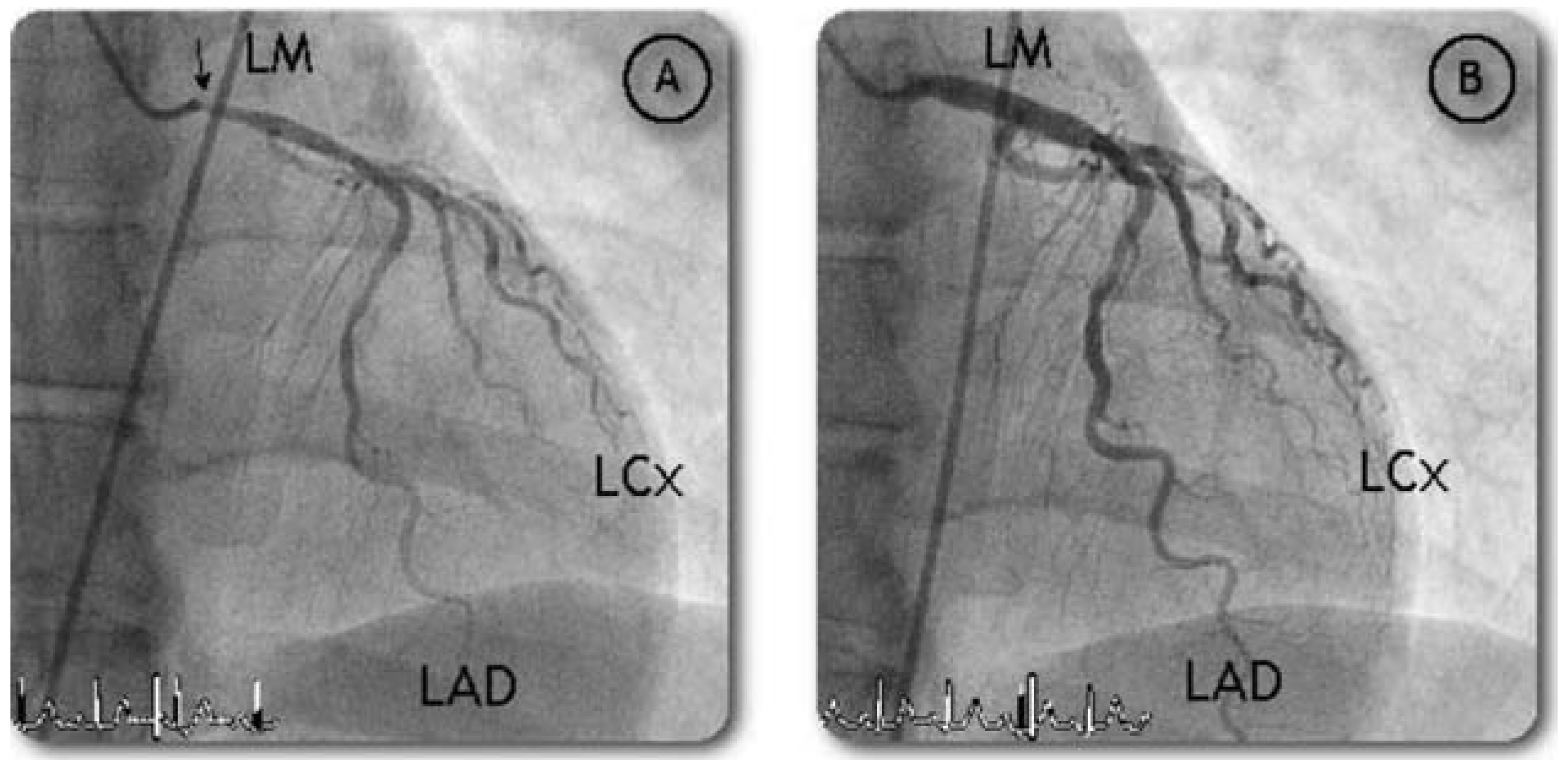Cold Hands, Headache and Chest Pain: A Winter Disease?
Case report
Conflicts of Interest
References
- Mautner, R.K.; Cooper, M.D.; Phillips, J.H. Catheter-induced coronary artery spasm: An angiographic manifestation of vasospastic angina? Am Heart J. 1983, 106 Pt 1, 659–665. [Google Scholar] [CrossRef] [PubMed]
- Sueda, S.; Fukuda, H.; Watanabe, K.; et al. Usefulness of accelerated exercise following mild hyperventilation for the induction of coronary artery spasm: Comparison with an acetylcholine test. Chest 2001, 119, 155–162. [Google Scholar] [CrossRef] [PubMed]
- Roffi, M.; Meier, B.; Allemann, Y. Angiographic documented coronary arterial spasm in absence of critical coronary artery stenoses in a patient with variant angina episodes during exercise and dobutamine stress echocardiography. Heart 2000, 83, E4. [Google Scholar] [CrossRef] [PubMed]
- Riemekasten, G.; Opitz, C.; Audring, H.; et al. Beware of the heart: The multiple picture of cardiac involvement in myositis. Rheumatology 1999, 38, 1153–1157. [Google Scholar] [CrossRef] [PubMed]

© 2007 by the authors. Attribution - Non-Commercial - NoDerivatives 4.0.
Share and Cite
Moarof, I.; Ingold, U.; Cook, S. Cold Hands, Headache and Chest Pain: A Winter Disease? Cardiovasc. Med. 2007, 10, 262. https://doi.org/10.4414/cvm.2007.01257
Moarof I, Ingold U, Cook S. Cold Hands, Headache and Chest Pain: A Winter Disease? Cardiovascular Medicine. 2007; 10(7):262. https://doi.org/10.4414/cvm.2007.01257
Chicago/Turabian StyleMoarof, Igal, Ulrich Ingold, and Stéphane Cook. 2007. "Cold Hands, Headache and Chest Pain: A Winter Disease?" Cardiovascular Medicine 10, no. 7: 262. https://doi.org/10.4414/cvm.2007.01257
APA StyleMoarof, I., Ingold, U., & Cook, S. (2007). Cold Hands, Headache and Chest Pain: A Winter Disease? Cardiovascular Medicine, 10(7), 262. https://doi.org/10.4414/cvm.2007.01257



